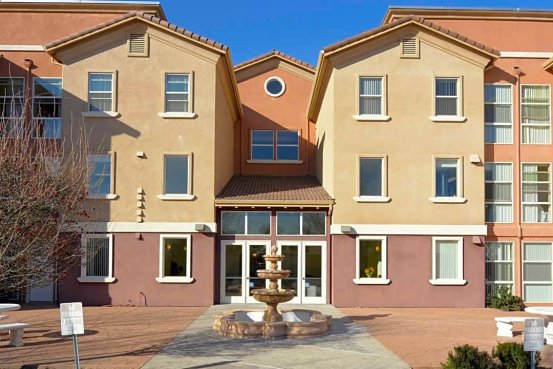Senior care
Navigating Affordable Options in Senior Living Communities
With the aging population growing, the demand for affordable, supportive housing for seniors is rising steadily.
With the aging population growing, the demand for affordable, supportive housing for seniors is rising steadily.

Trends in Economical Senior Housing
The landscape of senior living is evolving. High occupancy rates, particularly in independent living communities, show that many older adults actively seek support and social engagement. Yet, with construction slowing and demand increasing, new and creative solutions are needed to ensure seniors have access to suitable housing options.
The Growth of Shared Living and Accessory Dwelling Units
Shared living arrangements are becoming increasingly popular, offering seniors independence while providing a supportive community. These communities often feature wellness programs, smart home technologies, and sustainable living practices. By sharing resources like utilities, maintenance, and groceries, residents can significantly reduce costs while fostering companionship and reducing social isolation. The combination of financial savings and social benefits makes shared living an attractive option for seniors seeking both affordability and connection.
Government and Advocacy Programs
Various organizations are working to expand affordable housing for seniors. Programs like the USDA's Single Family Housing Direct Loan assist low-income rural residents, including seniors, in achieving homeownership. Investments in preserving and revitalizing multifamily housing help maintain rental options in rural communities. Funding often targets energy efficiency and community facility development, ensuring equitable access to resources. These initiatives are critical for promoting affordable elder living, especially in underserved areas.
Innovative Investment and Financing Approaches
Industry leaders are exploring creative ways to fund and develop senior housing. Discussions in forums like the Senior Housing Investors Podcast highlight strategies such as new construction techniques, integrating technology to reduce operating costs, and partnering with healthcare providers. Some healthcare systems are offering transitional and recuperative housing combined with health services, supporting seniors during hospital-to-home transitions. Collaboration with municipal and state programs can expand access to permanent affordable housing via vouchers and coordinated referrals, improving both health outcomes and financial accessibility.
Strategies for Aging in Place Affordably
Many seniors prefer to remain in their own homes, and with careful planning, this can be a cost-effective choice.
Homestead Exemptions and Government Support
Homestead exemptions protect a portion of home equity from creditors, which is particularly valuable for seniors on fixed incomes. These exemptions help prevent forced sales during financial hardship, safeguarding retirement assets. Additionally, government programs provide loans, grants, and financial assistance to maintain or upgrade homes, often improving energy efficiency and reducing utility costs. Understanding these resources can greatly aid in securing affordable and stable housing.
Shared Living Options
Senior co-housing provides a financially accessible alternative to traditional assisted living. Residents share utilities, maintenance, and common facilities, lowering monthly costs significantly. Beyond financial advantages, co-housing fosters social interaction, combating isolation and improving overall quality of life. These arrangements allow seniors to combine independence with the support of a community network.
Planning Ahead for Senior Living Costs
With rising rents and increasing demand, planning early is essential. Seniors should assess their financial situation, create a budget accounting for healthcare and housing, and explore available resources. Consulting with financial advisors specializing in senior planning can help ensure sustainable and comfortable living arrangements.
Community Living: Social and Financial Advantages
Living in a community offers both social support and cost savings. Shared resources in co-housing or retirement communities, such as common spaces, energy-efficient services, and group-negotiated discounts, help reduce individual expenses. These arrangements also promote a sustainable lifestyle by conserving resources.
Fostering Social Connections
Community living addresses isolation by providing social opportunities and built-in support systems. Organized activities, events, and accessible neighbors contribute to security, mental well-being, and a sense of belonging, enhancing seniors’ overall quality of life.
Programs Supporting Aging in Place
Many communities provide services like transportation, meals, and social activities to help seniors remain independent. These programs reduce financial and logistical barriers, promote engagement, and foster a sense of connection with peers, supporting both well-being and affordable living.
Questions and Answers
Innovative options for independence on a budget: Co-housing and “granny pods” allow seniors to maintain independence while sharing costs and resources, emphasizing social interaction and affordability.
Finding independent living for $1,200/month or less: Seniors can explore subsidized housing, sliding-scale retirement communities, and programs from local agencies on aging to discover affordable options.
Role of government programs: Federal and state initiatives provide loans, grants, and preservation funding, expanding affordable senior housing opportunities.
Leveraging community resources: Local agencies, non-profits, and subsidized services can help seniors reduce elder care costs while maintaining a comfortable lifestyle.
References
https://www.accio.com/business/senior-living-occupancy-trends
https://www.seniorly.com/assisted-living/ohio/pickerington/amber-park-assisted-living
https://knowledgesky.net/affordable-senior-cohousing/
https://havenseniorinvestments.com/senior-housing-investors-podcas
How do you like this article?




